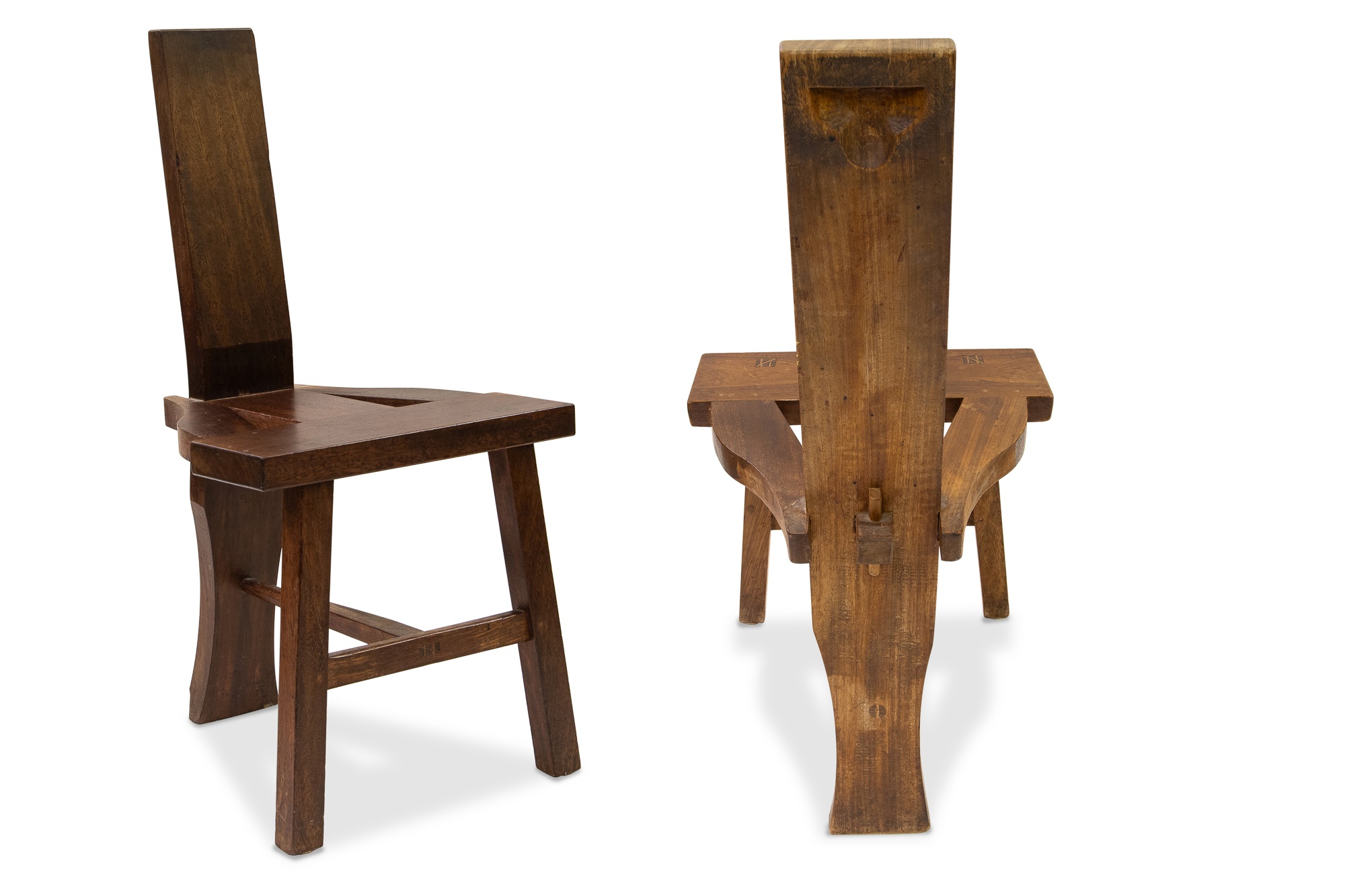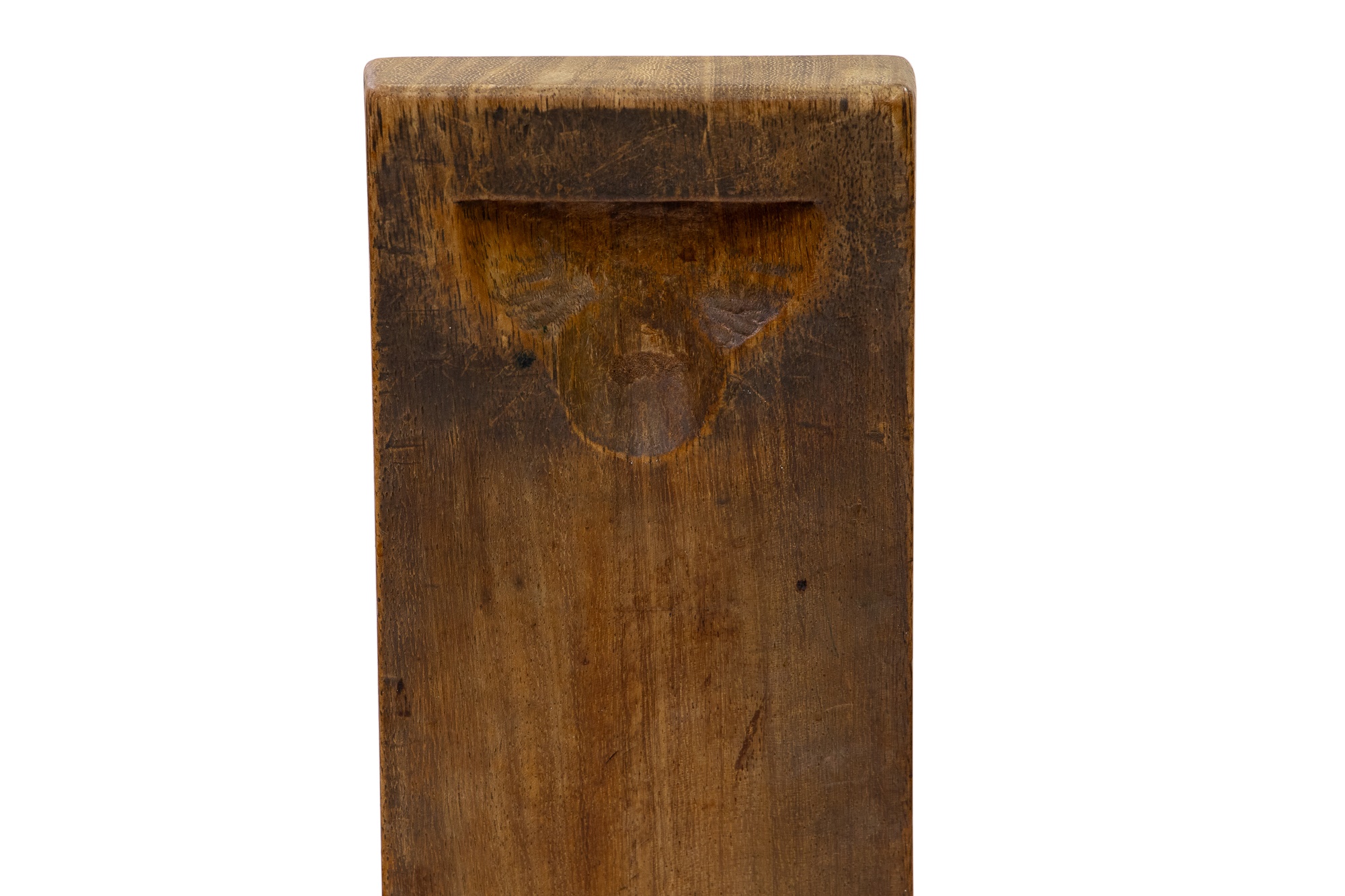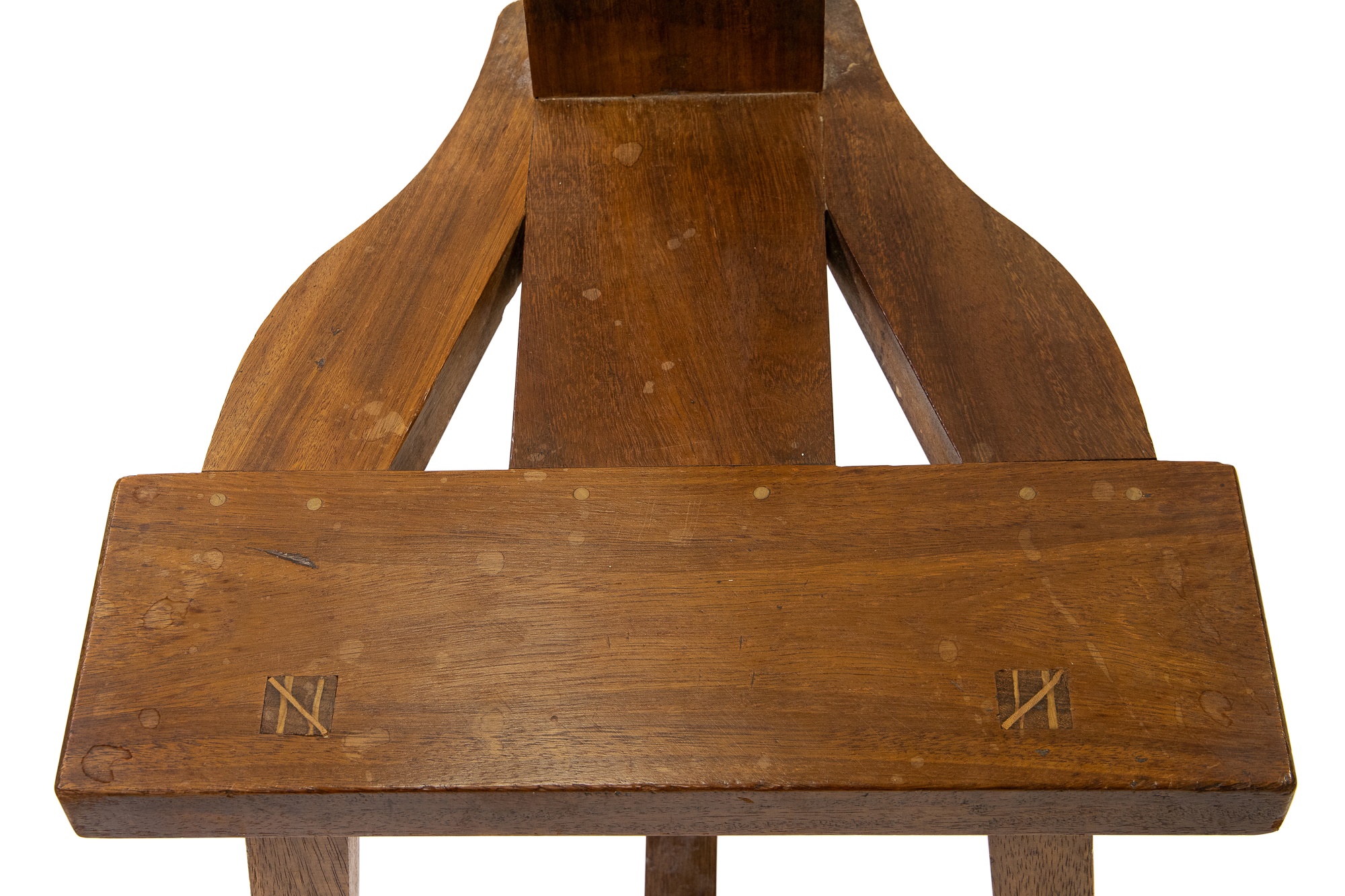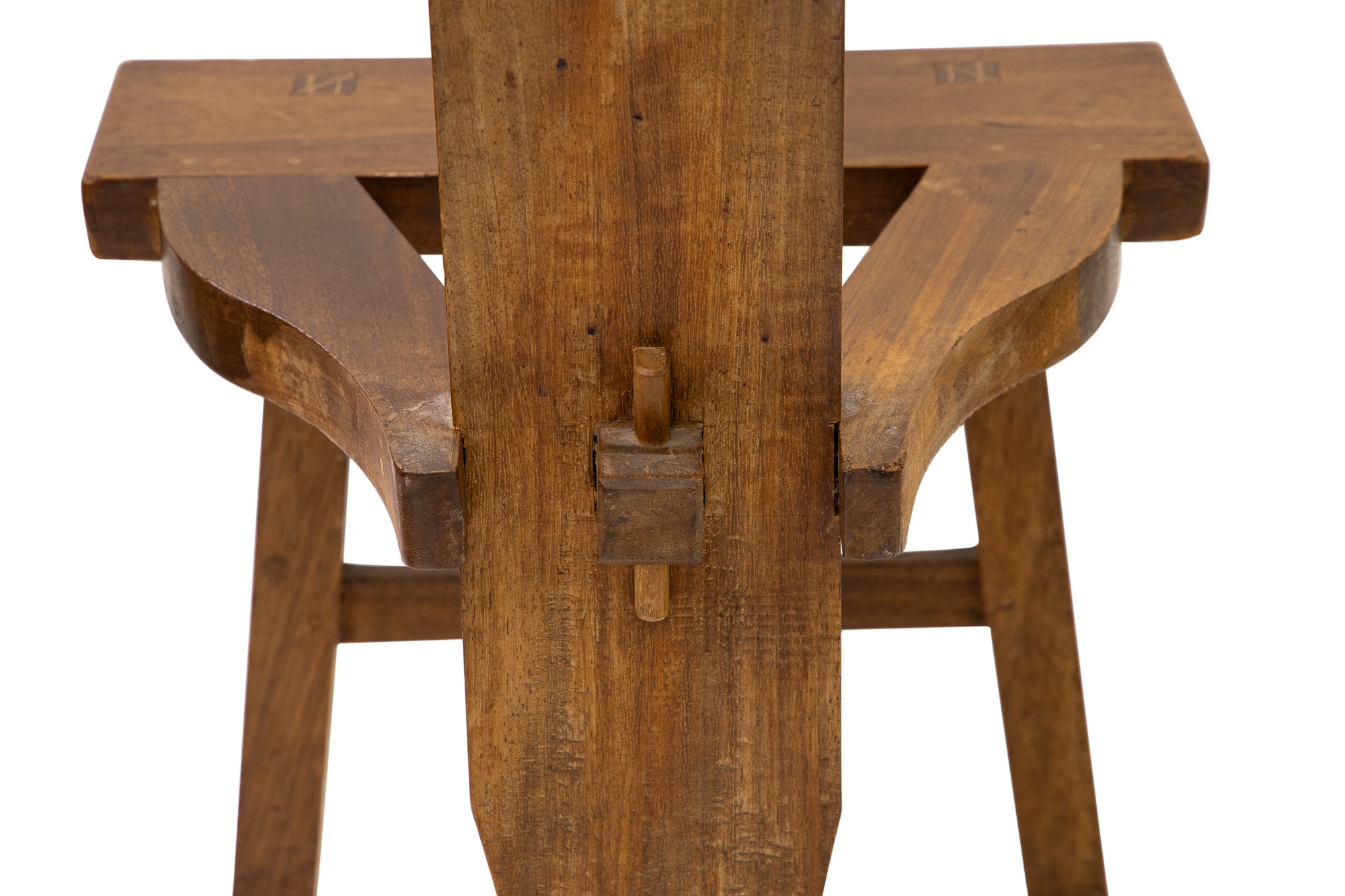Tuam Chairs
The Tuam chair, also known as the Sligo chair is a uniquely Irish piece of furniture
11/07/2025 Furniture
The Tuam chair, also known as the Sligo chair, is a uniquely Irish piece of furniture and is strongly related to folklore and tradition. The chair was primarily used in the province of Connacht, particularly in the Tuam area of Galway and in county Sligo. The ‘Sligo’ aspect of the name in particular comes from an 1832 edition of The Dublin Penny Journal which referred to an example of the chair as an ‘Ancient Irish oak chair’ from Drumcliffe in Sligo, while Tuam in Galway became the main production centre for the style in the 20th century.  With three legs, a narrow backpiece and a triangular base, the Tuam chair is extremely distinctive. Generally, they do not have armrests but that is not to say you will never come across one that does. The construction of a Tuam chair is often through use of mortice and tenon joints, in which one piece of wood has a space carved out (mortice) and a perfectly fitting piece of wood (tenon) is slotted in its place so that it cannot move. The construction of these chairs relies on precision and tension, eliminating the need for any other materials besides the wood itself.
With three legs, a narrow backpiece and a triangular base, the Tuam chair is extremely distinctive. Generally, they do not have armrests but that is not to say you will never come across one that does. The construction of a Tuam chair is often through use of mortice and tenon joints, in which one piece of wood has a space carved out (mortice) and a perfectly fitting piece of wood (tenon) is slotted in its place so that it cannot move. The construction of these chairs relies on precision and tension, eliminating the need for any other materials besides the wood itself.
There are a number of distinctive characteristics that set Tuam chairs apart from other pieces of furniture. All Tuam chairs have three legs, rather than the standard four - this is said to help balance and improve the stability of the chair on uneven surfaces which were common in old Irish cottages. The use of this feature most-likely derives from the creepy/creepie stools used for milking and sitting beside the fire, which also have three legs to improve balance.The seat of the chair is always made from four different pieces of wood and in a triangular shape. Two larger pieces fit together to make a ‘T’ shape, with two narrower pieces along the sides to create the triangular shape.
You will often find a handgrip carved into the back of the chair to make it easier to carry. Furniture was generally sparse throughout an old Irish cottage, so this chair was likely carried throughout from the sitting room, to the bedroom, to the kitchen. You can imagine a group gathered around a seanchaí, bringing their chairs in a circle to listen to the stories of Oisín and Na Fianna. One seanchaí and carpenter in particular, Tom Durkan, suggests that the chairs were originally made from the “seven woods of the cross” which are: ash, alder, birch, elm, larch, willow, and briar. However, as with many folklore tales, a true physical example of this exact description has never been found.
After the Famine, possession of furniture became more of a symbol of status and was indicative of your social standing. However, the Tuam chair was consistent among all households, and was more of a relation to that of culture rather than class or status. In our July auction, we have a set of six Tuam chairs, all with their original cushions, with an auction estimate of €900 - 1,200. They would make an excellent addition in any home, fitting perfectly in a rural cottage or bringing a touch of tradition to a modern city home.

